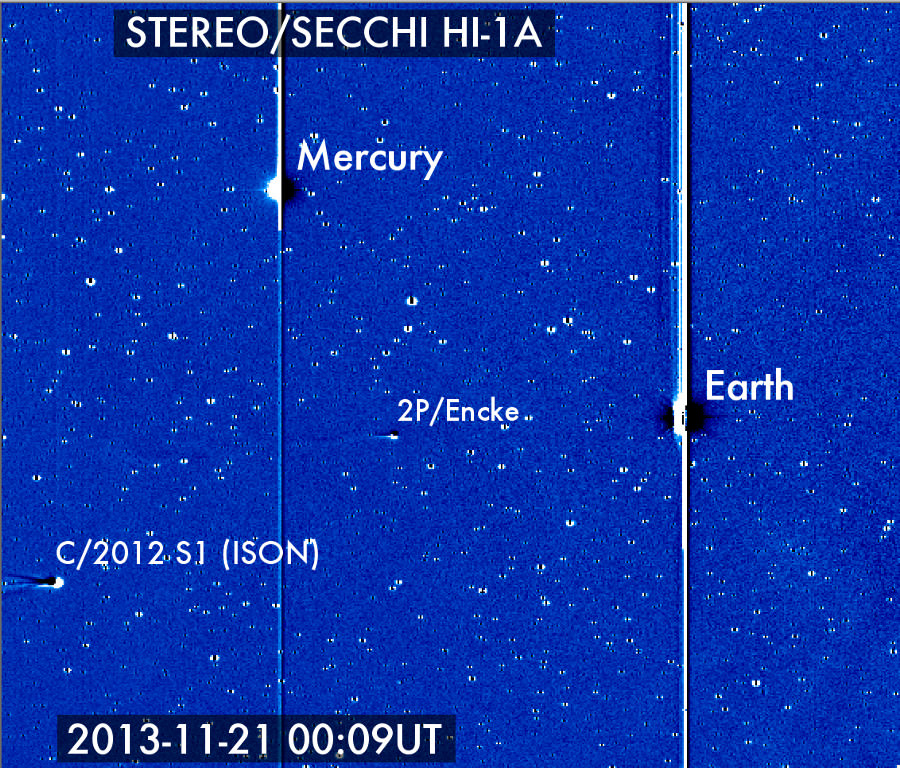As comets ISON and Encke continue toward their respective rendezvous with the Sun, they have now both been captured on camera by NASA's solar-observing
STEREO
spacecraft. The image above, taken on Nov. 21 (UT) with STEREO-A's high-resolution HI-1 camera, shows ISON as it enters the field of view from the left. Encke is at center, while the planets Mercury and Earth (labeled) are bright enough to cause vertical disruptions in the imaging sensors. (The Sun is off frame to the right.)
As cool as this image is, it gets even better:
there's a video version.
Check it out below:
[caption id="attachment_106672" align="aligncenter" width="534"]
Animation of STEREO-A images acquired on Nov. 20-21 (Karl Battams/NASA/STEREO/CIOC)[/caption]
The dark "clouds" coming from the right are density enhancements in the solar wind, causing all the ripples in comet Encke's tail.
(Source)
[caption id="attachment_106673" align="alignright" width="200"]
The position of NASA's STEREO spacecraft relative to Earth and the Sun on Nov. 22[/caption]
It's fascinating to watch how the solar wind shapes and affects the tail of comet Encke... as ISON moves further into view, I'm sure we'll see similar disruptions in its tail as well. (And look what STEREO-A saw happen to Encke's tail
back in 2007
!)
Encke reached the perihelion of its 3.3-year-long orbit on Nov. 21; newcomer ISON will arrive at its on Nov. 28. While it seems to be holding together quite well in these STEREO images, what happens when it comes within 730,000 miles of the Sun next week is still anybody's guess.
 Universe Today
Universe Today
